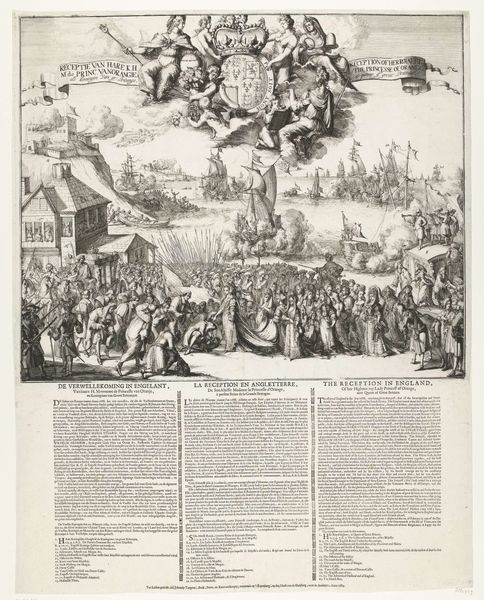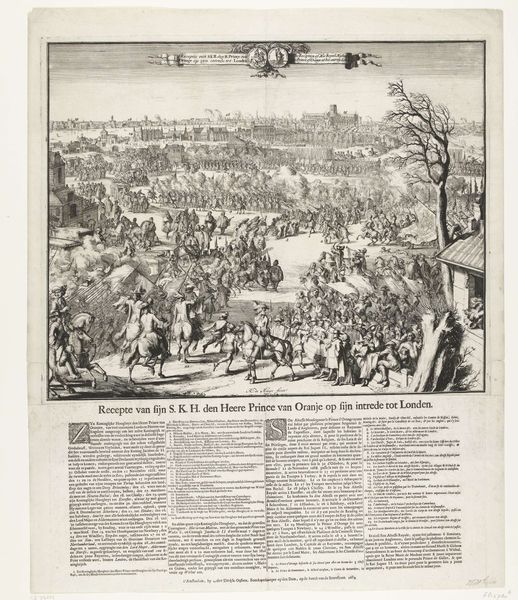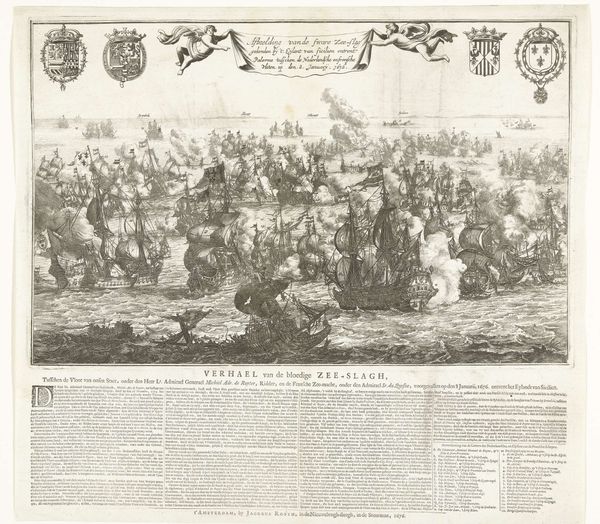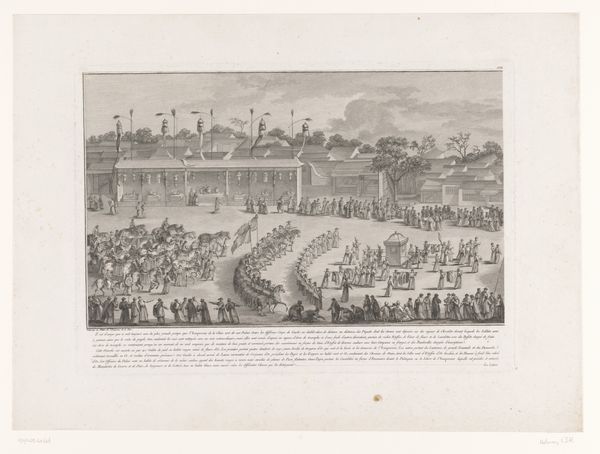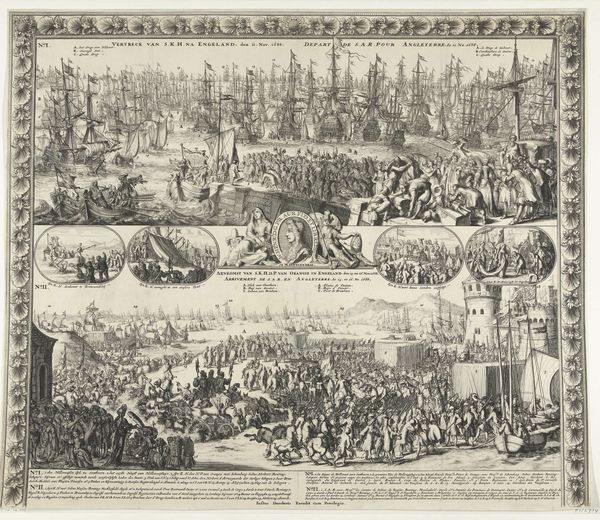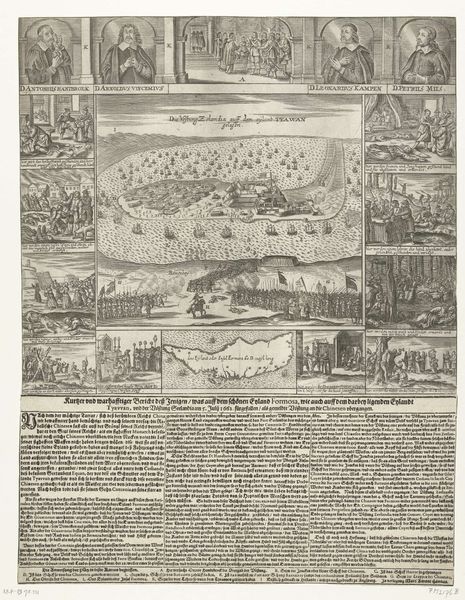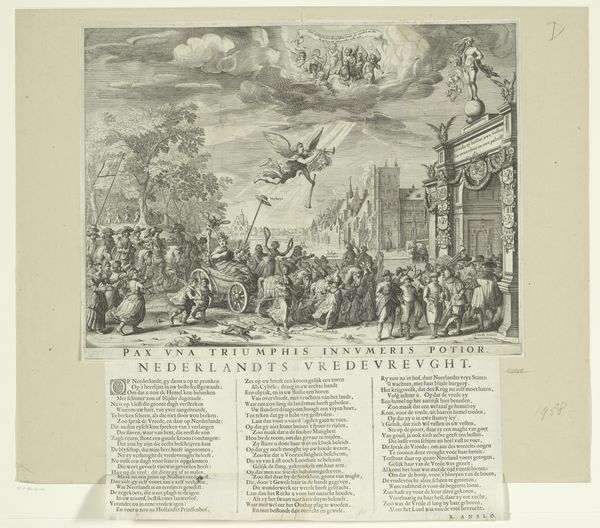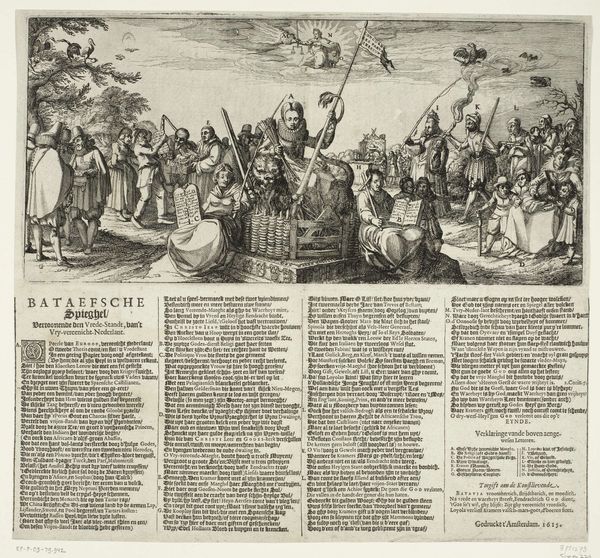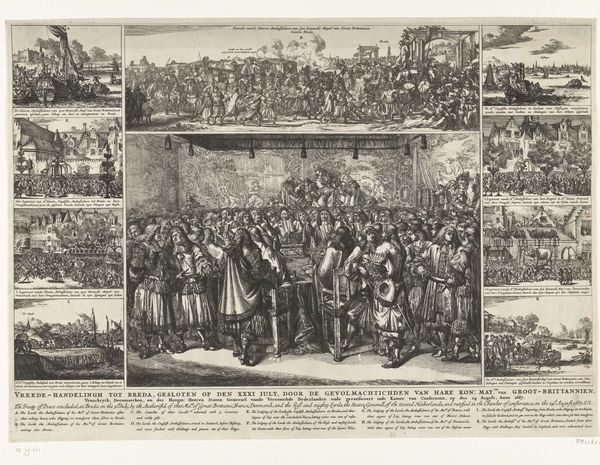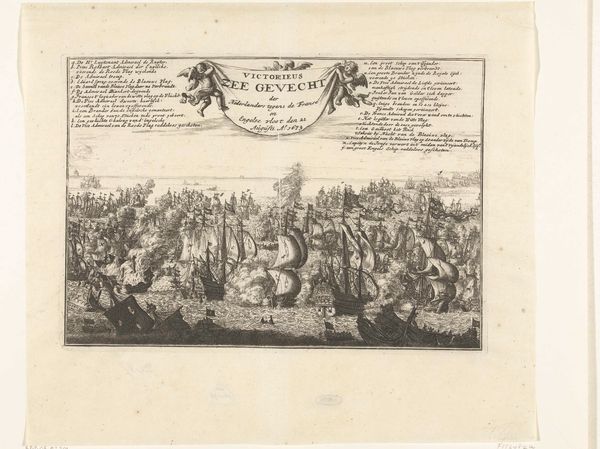
Optocht van de burgers van het dorp Jisp ter viering van de Vrede van Rijswijk, 1697 1697
0:00
0:00
print, engraving
#
narrative-art
#
baroque
# print
#
old engraving style
#
figuration
#
line
#
cityscape
#
genre-painting
#
history-painting
#
engraving
Dimensions: height 773 mm, width 613 mm
Copyright: Rijks Museum: Open Domain
Curator: This is Laurens Scherm’s “Procession of the Citizens of the Village of Jisp Celebrating the Peace of Rijswijk, 1697,” an engraving depicting a local celebration. It’s held here at the Rijksmuseum. Editor: My immediate impression is one of incredible detail. Look at the linear precision capturing so many figures. The uniformity and almost photographic stillness contrasts so boldly with a scene that one imagines to have been lively and sonorous. Curator: Absolutely, the engraving offers an incredible record of the public rituals surrounding peace treaties in the Dutch Republic. What appears static to us was designed as a very powerful and resonant form of communicating stability, community, and restored social order. Editor: And structurally, note how Scherm has arranged the composition. The perspective leads your eye from the foreground figures, up toward the townscape receding in the distance, effectively mimicking a long march. The banners overhead and printed description below frame the action so well. Curator: It’s worth understanding the historical weight of these prints too. Engravings like these played a crucial role in shaping public perception, documenting events like the Peace of Rijswijk. It was essential that citizens felt connected and invested in these treaties that impacted their lives and livelihoods, and that visual medium became a key part of solidifying support for the governing party, demonstrating the impact and public role of art during that period. Editor: Do you think the almost journalistic detail serves also as a moralistic tone? Curator: That's interesting. What do you see that suggests such a reading? Editor: It has the tone of an organized report—as if not just conveying information but ordering communal memory into specific understanding of their governing figures. A carefully arranged vision. Curator: I agree! As an artwork, Scherm's engraving encapsulates both the artistry of linear engraving and the political functions of art within Dutch society in the late 17th century. Editor: From the calculated composition to its social impact, it's fascinating to analyze the intersections between form and historical context.
Comments
No comments
Be the first to comment and join the conversation on the ultimate creative platform.
